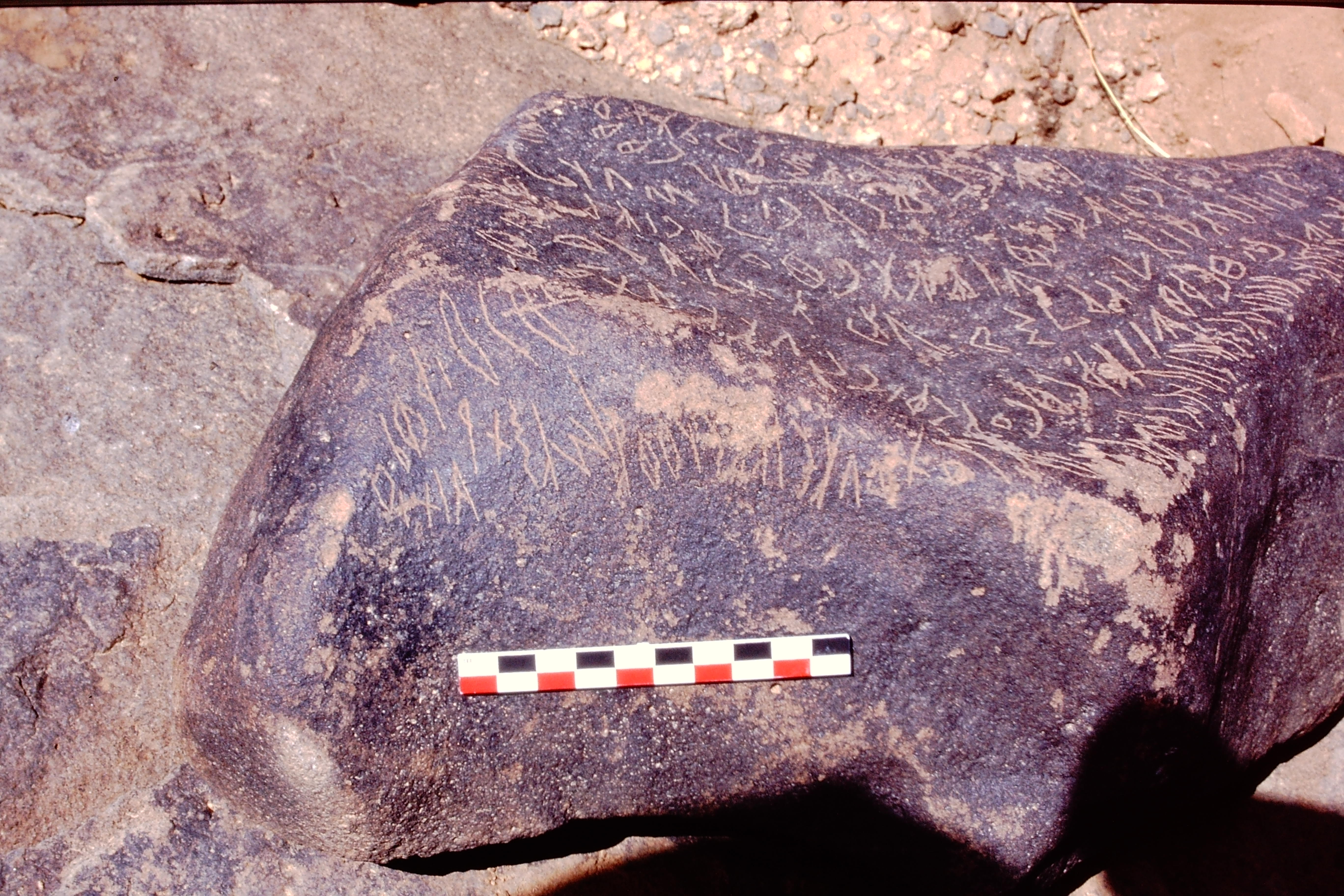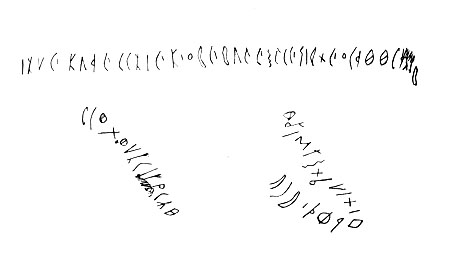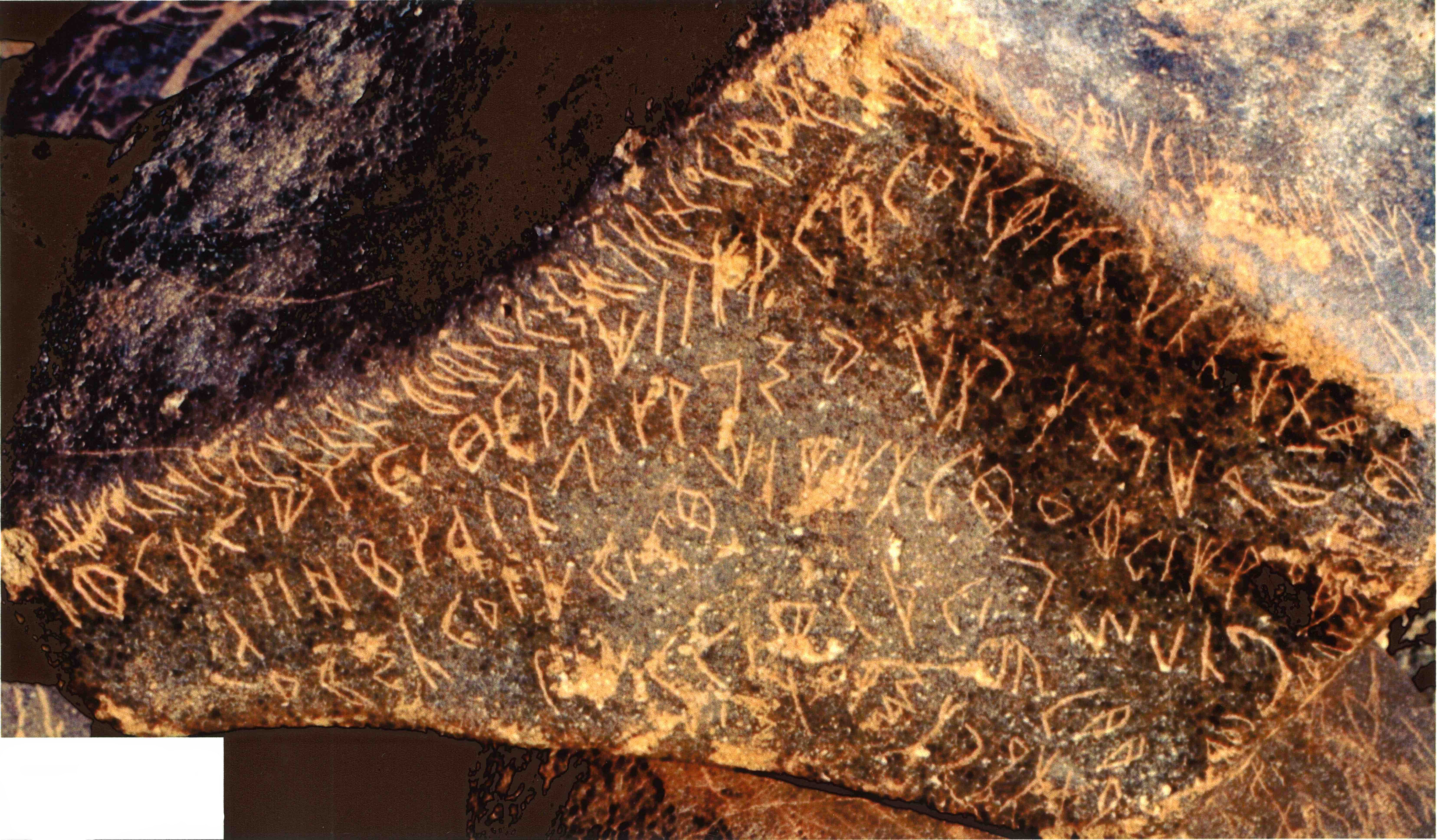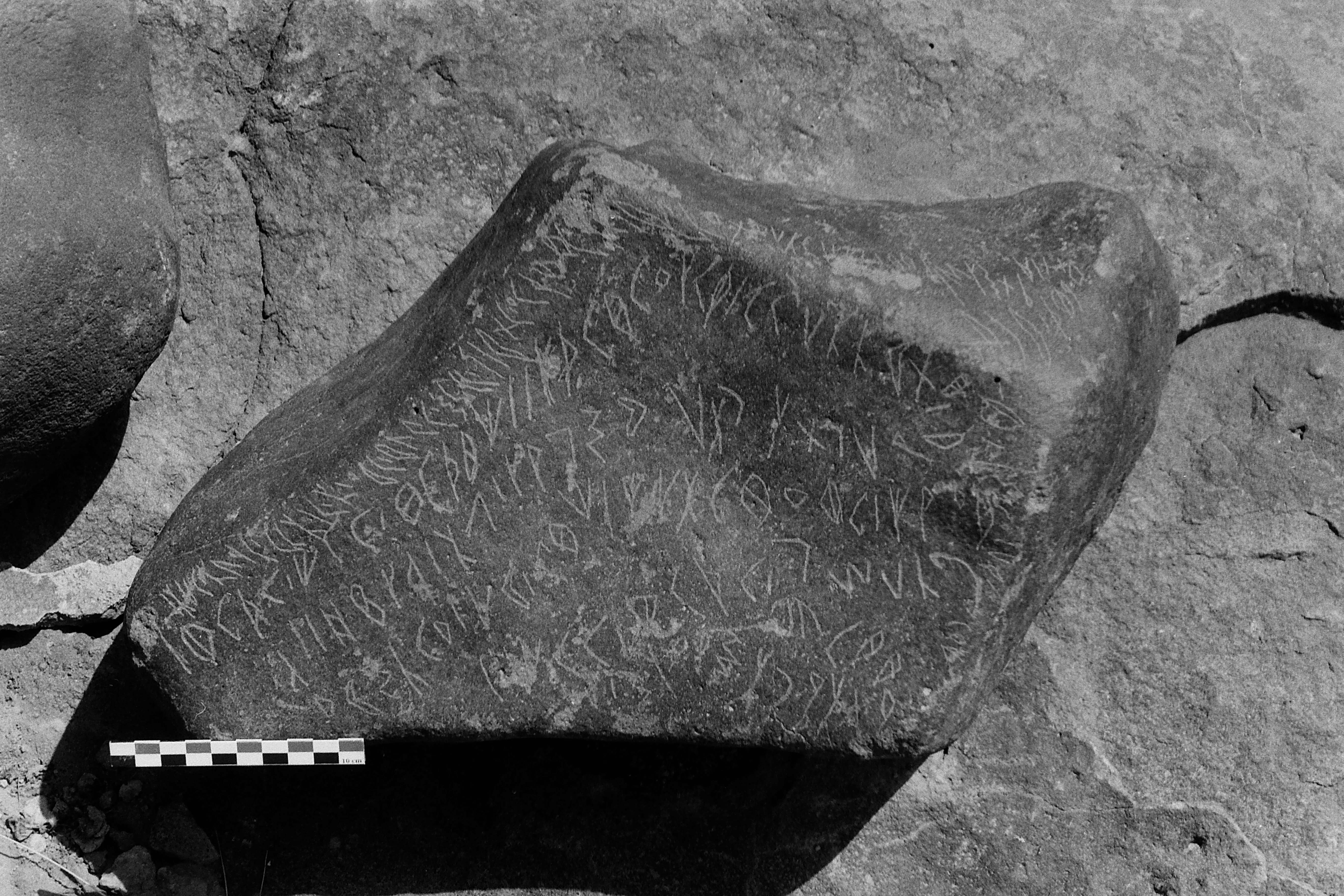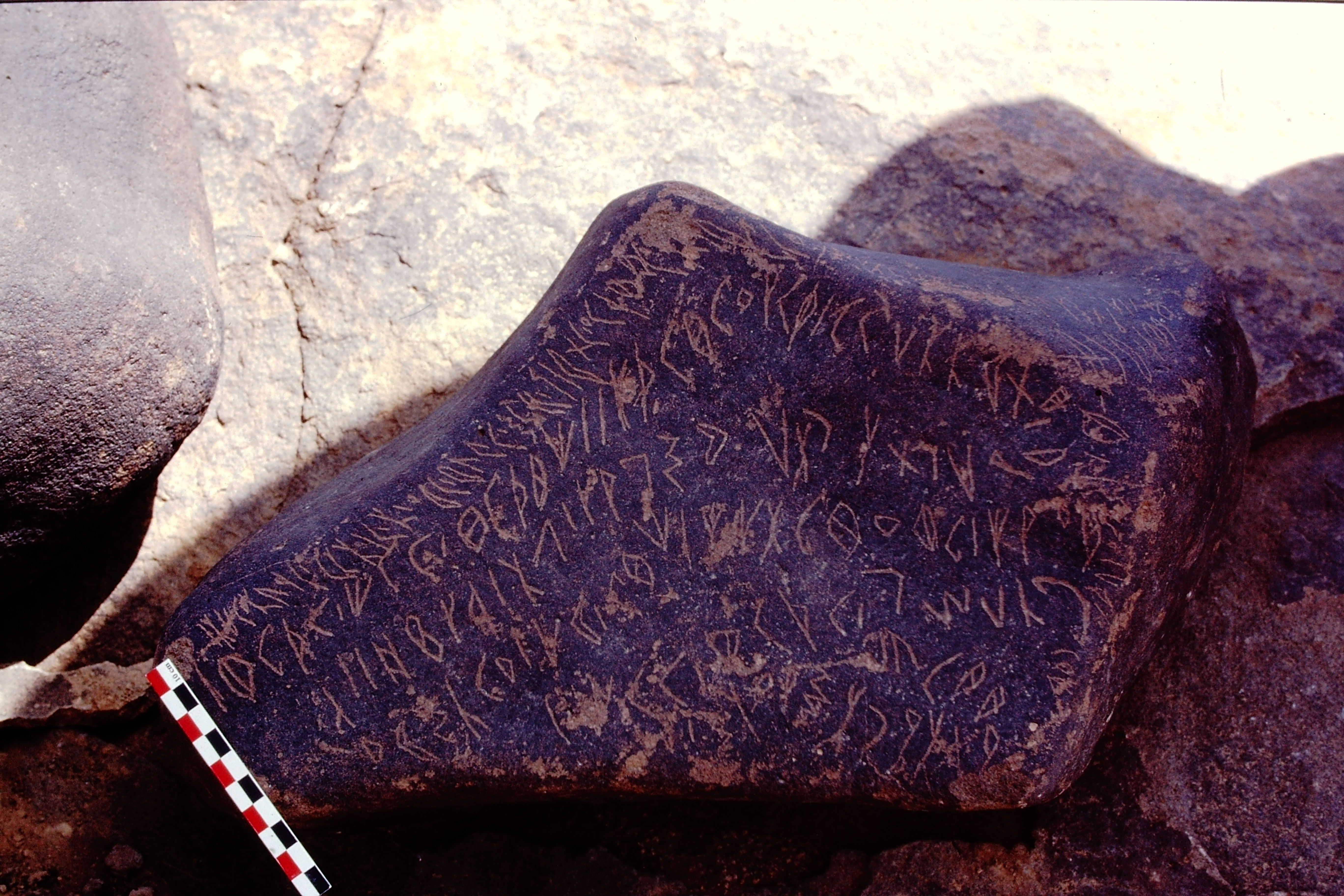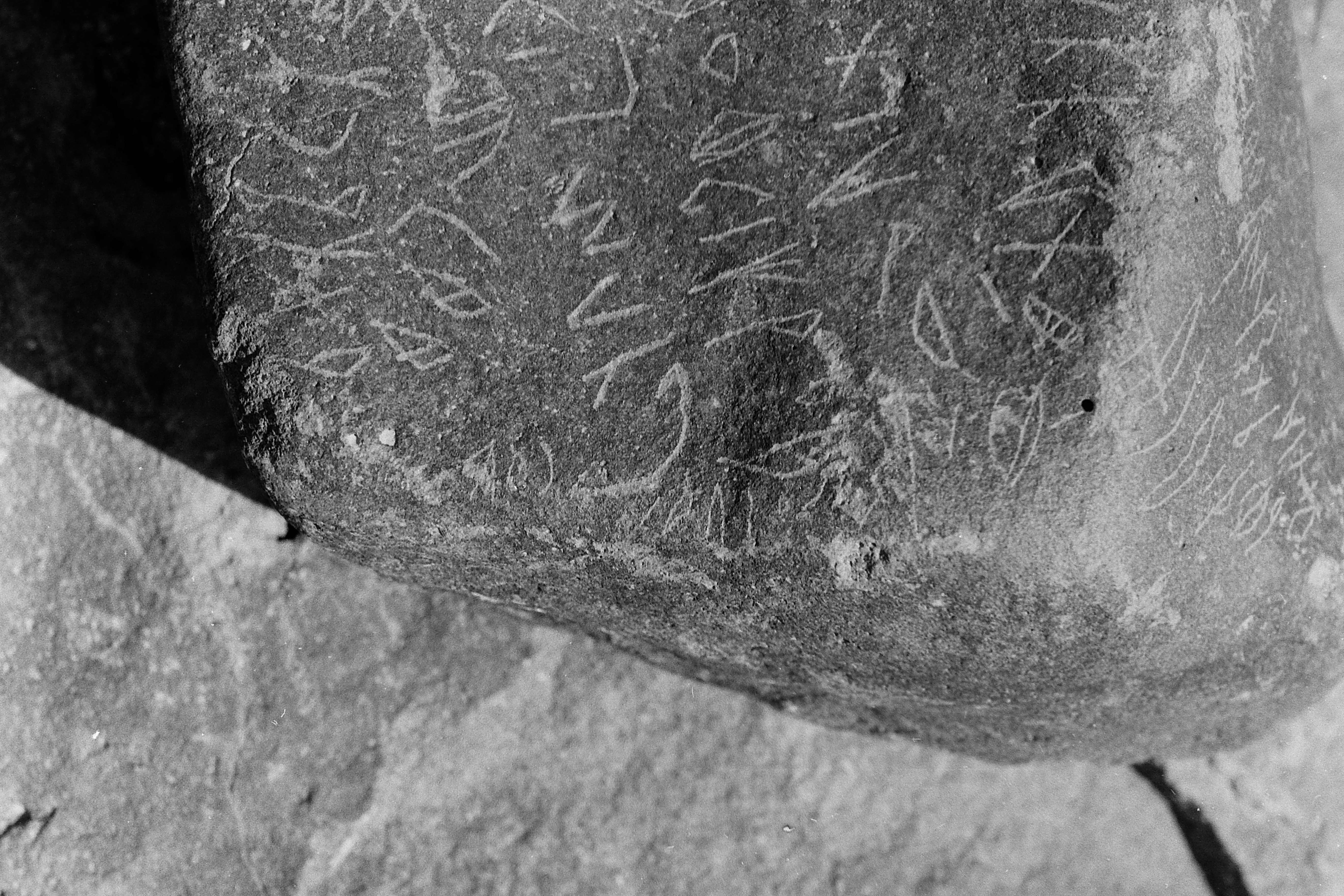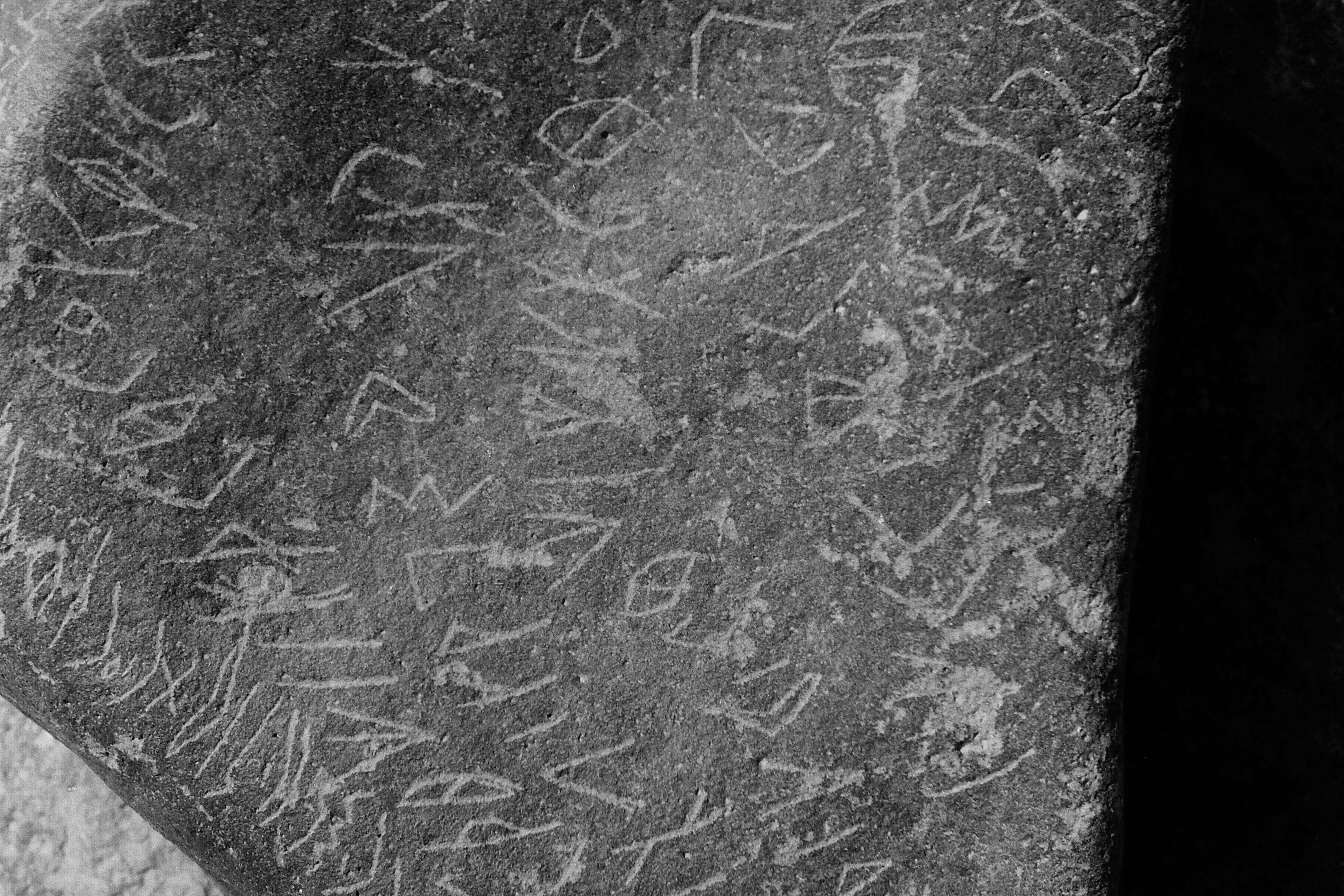LP 406
Text Information
- Siglum
- LP 406
- Alternative Sigla
- Is.Mu 88
- Transliteration
- l ʾs¹ b{n} ʾs¹d bn rbʾl bn ʾnʿm bn ms¹k bn s²kr bn ġlmt bn ʿbd w wr{d} {b-} {h-} mrbʿt w s¹ʾr ----r h- gw ṣlf h- s²ty s¹nt ngy wdn m- rm----wn{y} f {h} bʿls¹mn rwḥ <<>>
- Translation
- By ʾs¹ {son of} ʾs¹d son of Rbʾl son of ʾnʿm son of Ms¹k son of S²kr son of Ġlmt son of ʿbd and {he stayed at a watering place} in an area of abundant herbage and remained ---- a plain with many wells because the winter had brought no rain the year Wdn fled from Rm ---- wn{y} and so {O} Bʿls¹mn [grant] relief
Interpretation
- Apparatus Criticus
- LP 406: w wrd h- nmr{t} for w wr{d} {b-} {h-} mrbʿt; w ḫws¹ ʾbl [ʾ][ṯ]r ḏ w wṣl f h-s²ty for w s¹ʾr ----r h- gw ṣlf h- s²ty Macdonald 1992: 7 & n. 30: w ṣlf h- s²ty "the winter brought no rain"
- Commentary
- Area G. The strange arrangement of Littmann's copy suggesting large gaps between sections of the text is difficult to explain. As can be seen from the photograph there are no such gaps on the stone. The inscription runs along the edge of one face of the stone crosses over onto another at the word mrbʿt and then doubles back onto the first face at the word rm{n}. It must have been carved after LP 407 and 408 (Is.Mu 89 and 90) since it is squeezed into the spaces left by them on this face. Littmann did not record the last 16 letters which are scratched down the edge of this face opposite the first part of the text. The n of the first bn is obscured by the end of an abrasion which crosses the previous four letters. The upper parts of the d b h of wr{d} {b-} {h-} mrbʿt had already been destroyed by a chip when Littmann copied the text. The three letters after s¹ʾr are damaged by another abrasion and could be respectively l/h/y; ʾ/ṣ/h; ʾ/ṣ/ṯ/ḥ/y. The third side-stroke of the {ḏ} is lightly scratched and not joined to the stem and could be accidental making the letter a h. The author makes no distinction between b and r except in mrbʿt so it is not certain whether bmn or rmn should be read in the s¹nt clause. The abrasion after rm probably covers only one letter of which the ends protrude on either side. Other abrasions obscure part of the {y} and the whole of the {h} which follow. At the end of the text, there is what looks like a h carved at right angles to the letters rm and which does not seem to be part of the text. For mrbʿt compare Arabic murbiʿah "abounding with the herbage called rabīʿ [of land]" (Lane 1020a) For h- gw compare Arabic ǧaww "a basin in which water collects", an "open plain with many wells" (Groom 1983: 129). For ṣlf h- s²ty. In Classical Arabic, the basic meaning of the root Ṣ-L-F is to "disappoint expectations" and the verb is used in for instance ṣalifa ʾl-saḥāb "the clouds had in them no water" (Lane 1717c–1718a), hence here "the winter having brought no rain" (see Macdonald 1992: 7 and n. 30).
- Provenance
- Al-ʿĪsāwī is the name of a probably ancient well between two headlands on the eastern side of the Wādī Shām as it runs northwards from the modern Al-Namārah dam to the Ruḥbah. The well is large, stone lined and with stone water-channels running from it. The main concentration of published inscriptions is on the top of the northern headland, but there also many inscriptions on its south-west slopes, coming down to the well and on the southern headland, on the crest of which is a stone tower.
- Original Reading Credit
- OCIANA
- Original Translation Credit
- OCIANA
- Special Letter Forms
- b and r are not distinguished both being a shallow curve except in mrbʿt where r has clear neat hooks. However in rbʾl and s²kr bn no distinction made.
- Technique
- Incised
- Associated Inscriptions
- LP 407–408 (= Is.Mu 89–90) on the same face as the beginning of LP 406 (= Mu 88); Is.Mu 91 on an adjacent face
- Macdonald, M.C.A. The Seasons and Transhumance in the Safaitic Inscriptions. Journal of the Royal Asiatic Society of Great Britain and Ireland 3rd. series, 2, 1992: 1-11.
- Littmann, E. Safaïtic Inscriptions. Syria. Publications of the Princeton University Archaeological Expeditions to Syria in 1904–1905 and 1909. Division IV. Section C. Leiden: Brill, 1943.
- Lane, E.W. An Arabic-English Lexicon, Derived from the Best and Most Copious Eastern Sources. (Volume 1 in 8 parts [all published]). London: Williams & Norgate, 1863-1893.
- Groom, N. A Dictionary of Arabic Topography and Placenames. A Transliterated Arabic-English Dictionary with an Arabic Glossary of Topographical Words and Placenames. London: Longman / Beirut: Librairie du Liban, 1983.
- Inscriptions recorded at al-ʿĪsāwī by Muna Al-Muʾazzin, on the Safaitic Epigraphic Survey Programme, 1995–2002, and published here.
- Site
- Al-ʿĪsāwī, Rif Dimašq Governorate, Syria
- Date Found
- 1904–1905; 1996–2002
- Current Location
- In situ
- Subjects
- Date (s¹nt), Deity, Genealogy, Isolated Prayer, Outside peoples, Plants, Season, Topographic features, Watering
- Script
- Safaitic
- Old OCIANA ID
- #0027093
- Download Images
